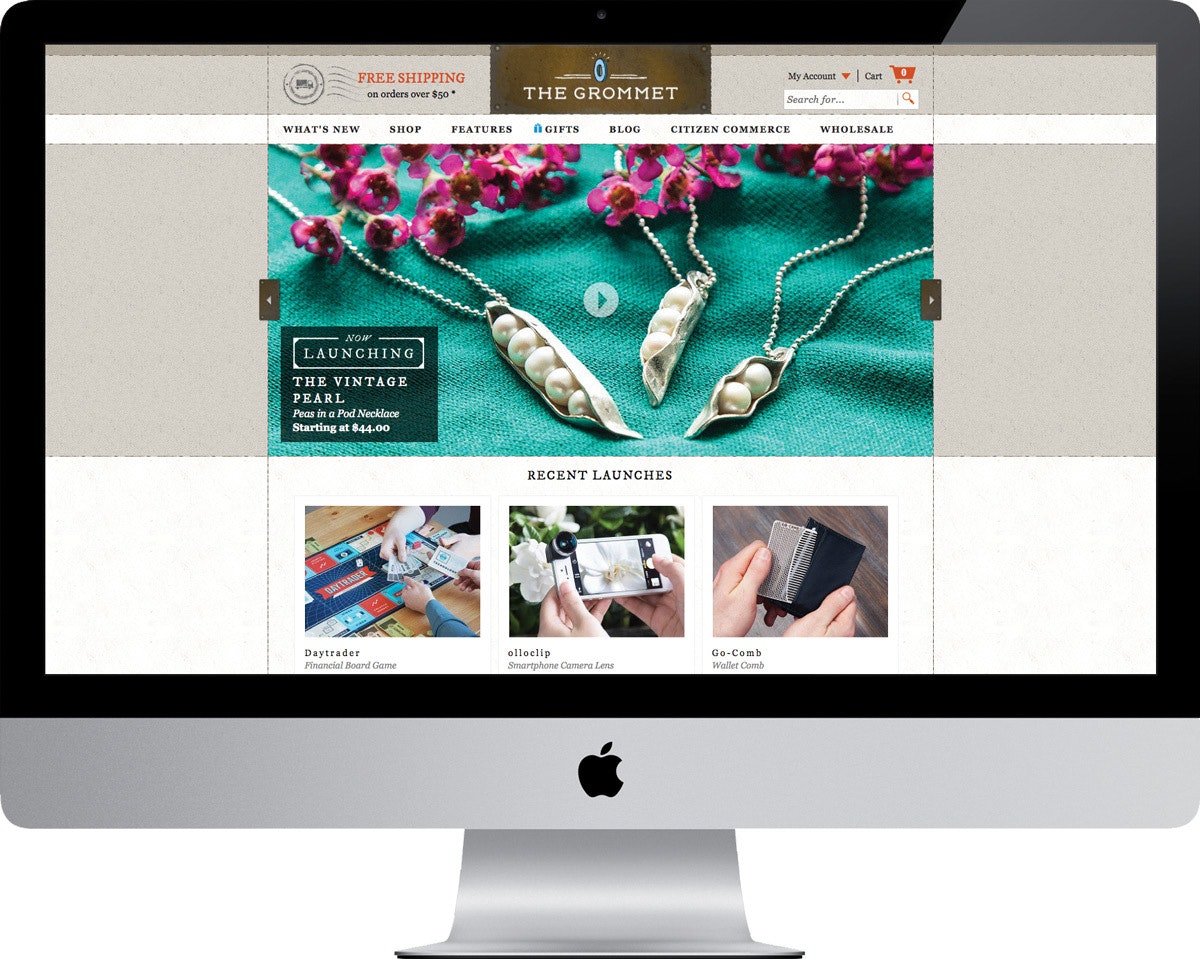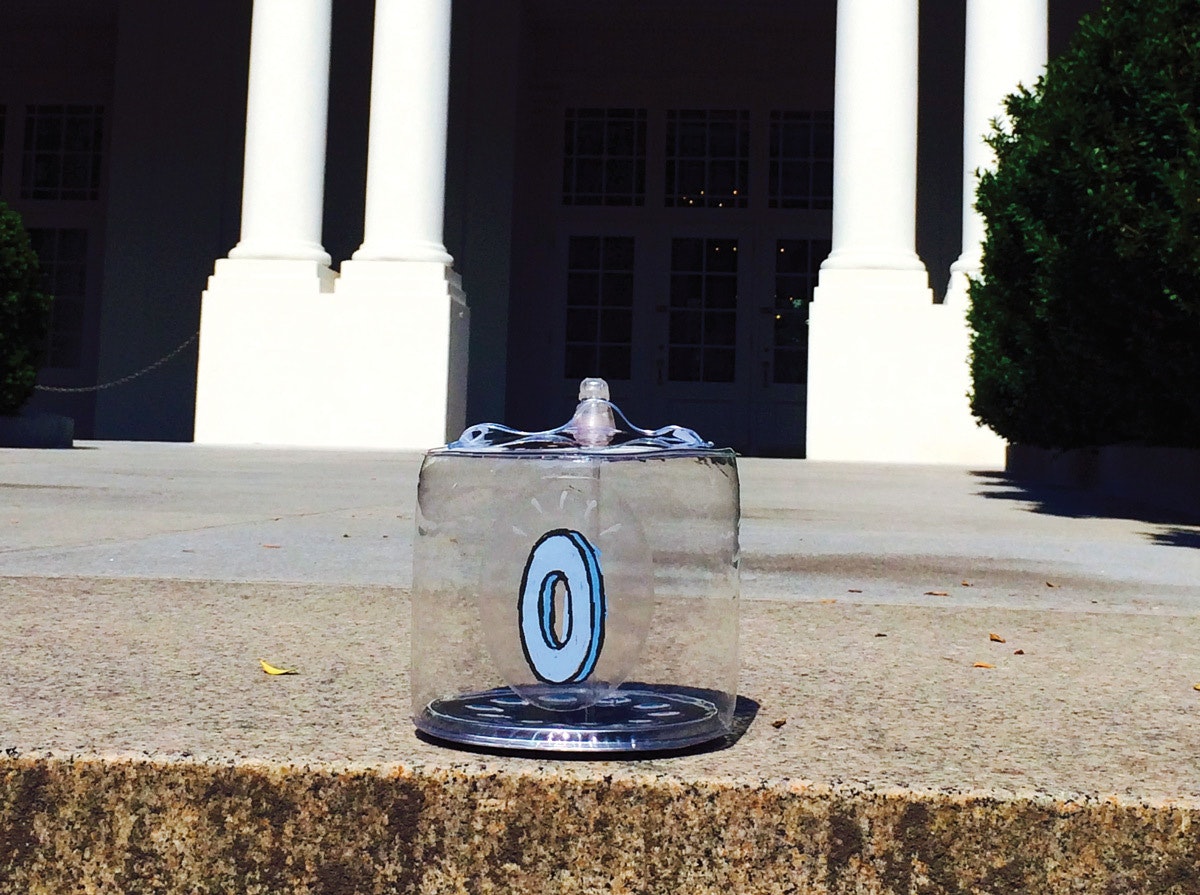Jules Pieri: Founder of The Grommet
SodaStream is a highly popular home carbonation system. GoldieBlox’s toys and games for girls promote interest in engineering and confidence in problem-solving. Fitbit produces wireless-enabled wearable devices that measure data such as the number of steps walked, quality of sleep and other personal metrics.
While these companies are now well-known brand names, they each got their start on The Grommet, an innovative product launch platform co-founded by Jules Pieri (BFA 1982) in 2008.
“We have an unusual business model,” says Pieri. “Our customer is not the consumer, it is the maker.” And makers on Pieri’s site have an opportunity to introduce their innovations in a very personal way. After submitting their products to Pieri and her team for review (only 3% of all products considered go on to become Grommets), they are introduced and promoted online through a 90-second video where they tell the story of their product’s conception and creation. They also participate in an online chat where potential consumers ask questions for six hours after the product airs, giving makers a chance to engage directly with customers.

Over the seven years since its inception, The Grommet has garnered a reputation among entrepreneurs as a savvy curator of innovative products and as a company that supports those it works with. As Pieri explains, “It’s a community. A big part of what we do is creating a business model that is the antithesis of the nameless, faceless business. We try to model our business on the local village economy, where you knew all the people who made things.”
And buyers have responded to this ethos. By 2014 over 2,000 products had been launched, thegrommet.com had received more than 200 million views, and email subscribers topped 2 million. But equally important, Pieri and her partner were able to expand the support they gave to their Makers to include business counseling and access to shared resources. “This is a company where the phones are ringing. We are talking to people all the time. In addition to creating things, Makers also have to be good at logistics, commerce, and financing. So we give them access to our UPS account and introduce them to Shipwire. We help them develop management tools so they can see what they are selling. We offer them data about different geographies. It’s a value-centered business, and we are serious about maintaining a value-centered mission.”
Pieri’s sense of community and personal values are grounded in her upbringing. “I grew up in Detroit. My mom was a bank teller, and my dad was a tool maker. Social consciousness was a part of my family and part of being from Michigan. People were concerned with the fabric of community. They were the lifeblood, the risk takers. At the end of my street were a railroad freight line and a GM Diesel plant. I could hear products being made all day long and hear things being transported all day long. Everyone on my street made something or fixed something. I felt the heroism of that kind of work.”
Pieri recalls coming from Detroit to the University of Michigan. “I was the first person in my family to go to college. I actually started out in the Residential College. But I’d been making art since high school and I missed it. After being accepted at Stamps, I was walking down the hall with my sculpture class one day when I saw some industrial design models on display. I said to myself, ‘That’s what I want to do.’ So I ended up with a double major in graphic and industrial design.”
Industrial design allowed Pieri to hone her design-thinking skills. It also helped her recognize that she had an ability to anticipate unmet consumer needs. “In 1981, I designed a portable laptop computer that was not all that different from the MacBook Air. I also designed a one-cup coffee maker in the era of Mr. Coffee. I didn’t quite see the coffee culture coming, but I could see that there were a lot of people who would want just one cup of coffee.”
“I learned that I was good at seeing how advances in technology, changes in people’s behavior and a gap in the competitive market could create opportunity. I first directed that talent toward designing a specific product. Now, with The Grommet, we’ve extended it to a business model.” Pieri and her partner in The Grommet, Joanne Domeniconi, met while they were both working at Keds on a team led by Meg Whitman, who would later become the CEO of eBay and Hewlett Packard. Domeniconi led product development at Keds, while Pieri was director of strategic marketing. Their Keds experience pointed them towards their future business. “We saw that the best products weren’t winning because big retailers needed them to be de-risked. They couldn’t take on innovators when they were complete unknowns.”
Recognizing the need to create a new space for innovators, Pieri and Domeniconi launched The Grommet. It was structured to empower individual makers and consumers to determine what products would succeed, rather than having success decided by powerful retailers.

“Designing a business is similar to designing a product. All start-ups begin as a blob. That’s how products start, too. As a designer you develop great skills for seeing the future and being able to marry it with present demands. You figure out what exists and what could exist. You try to sculpt the opportunity financially and gain an understanding of the competitive landscape.”
Recently, as more and more of The Grommet’s products became successful because of the visibility they received on the site, Pieri and Domeniconi envisioned a way to add small retailers to their business model, creating a triad of makers, consumers and retailers.
In May 2014, the company unveiled a new online wholesale (M2B) portal, The Grommet Wholesale. “Now we’ve brought small makers and small retailers together into a much larger effort. I was never interested in being a retailer. Our e-commerce is just a way to find out about the product. I always wanted to find a direct route to retailers and I didn’t plan to have us remain exclusively online. Our aim was to have the business actually be part of local communities — to recreate the community-centered main streets that we all grew up with.”

“I’m most excited about the business opportunity for all the companies we work with. The thing that gets missed in all the hype is that these companies are so far ahead of the market. We’re doubling the number of our launches over time, and helping the regular person realize their creative potential.”
“I do believe this is a Small + Small = Big scenario. I was talking to the venture capitalist who originally funded eBay and he said you have the same opportunity — you need to grow large while always staying small. That’s what we strive for every day.”
Jules Pieri is Founder and CEO of the product launch platform The Grommet. Pieri started her career as an industrial designer for technology companies and was subsequently a senior executive for such large brands as Keds, Stride Rite, and Playskool. The Grommet is her third startup, following roles as VP at Design Continuum and President of Ziggs.com. In addition to her undergraduate degree from the Stamps School of Art & Design at the University of Michigan, people tell her she is the first designer to graduate from Harvard Business School, where she is an Entrepreneur in Residence. Pieri was named one of Fortune's Most Powerful Women Entrepreneurs in 2013. And in 2014, she was invited to launch Grommet Wholesale at the first-ever White House Maker Faire. She writes a personal blog at www.jules.thegrommet.com, and for a column named “CEO Unplugged” on Inc.com. She posts as @julespieri on Twitter and Instagram.